Magnetic method
The Hall effect and the most important influencing factors.
The magnetic method is based on the different magnetic properties of coating and base material and is used to measure magnetic coatings on non-magnetic metals or plastics or to test non-magnetic coatings on steel or iron. Especially for thicker electroplated layers, the magnetic method may be more suitable than magnetic induction.
This is how the magnetic process works.
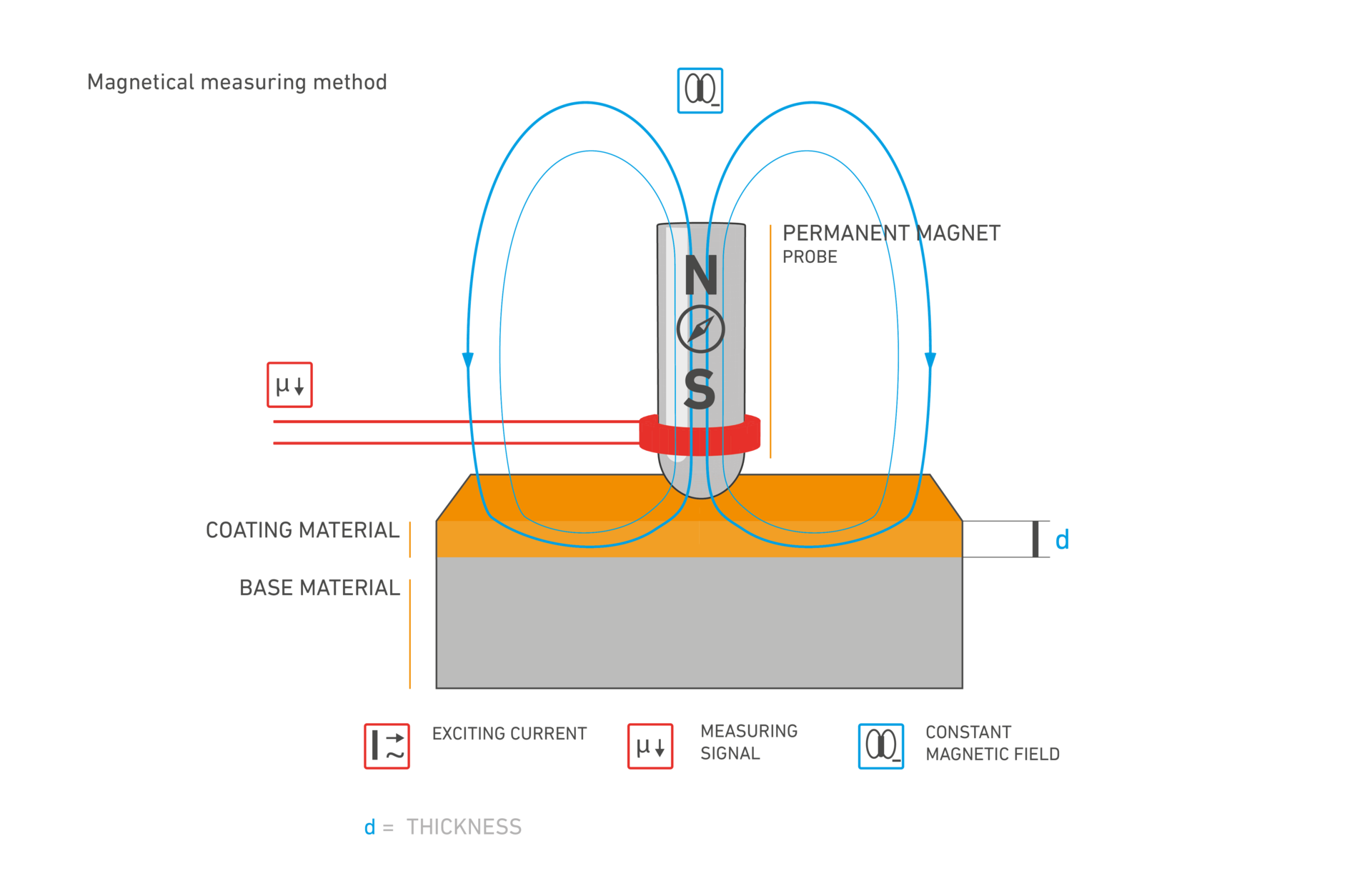
Measuring with the magnetic method is based on the Hall effect named after Edwin Hall. The effect occurs when a current-carrying conductor is in a constant magnetic field.
When electrons move through the conductor, they also move through the static magnetic field. This causes the Lorentz force to act on them. The Lorentz force pushes electrons that are perpendicular to the magnetic field to the edge of the conductor. This results in charge separation. As with a capacitor, this creates a voltage – the Hall voltage.
How can it be used to measure coating thicknesses?
Magnetic materials, such as a nickel coating, strengthen the static magnetic field. This also increases the Hall voltage. The voltage is measured and converted into a coating thickness value in the measuring device by means of a probe characteristic curve – the functional relationship between the measurement signal and the coating thickness.
Where is this process used?
- Measuring thick metal (chromium, zinc, copper, aluminum) or protective (paint, varnish, rubber, plastic) coatings on steel and iron
Measuring protective or magnetizable nickel layers on non-ferrous metals such as aluminum, copper or brass
What factors can influence the measurement?
All electromagnetic measuring methods are comparative. This means that the measured signal is compared with a characteristic curve stored in the device. To ensure that the result is correct, the characteristic curve must be adapted to the current conditions. This is done by calibrating the measuring device for coating thickness measurement.
The right calibration makes the difference
Factors that can strongly influence a coating thickness measurement are: the magnetic permeability of the base material, the shape of the test part, and the roughness of the surface. In addition, the operator himself can influence the result.
Magnetic permeability
The magnetic permeability indicates how well a material can adapt to a magnetic field. Materials such as iron or nickel have a high permeability. They become magnetized themselves and amplify the magnetic field.
Because permeability differs between metals and their coatings, measuring devices must be recalibrated when materials are changed in order to measure the coating thickness without error. Permeability is dependent on several factors, such as steel grade, batch, part processing and temperature treatment. To avoid errors in the measuring, these factors should be taken into account.
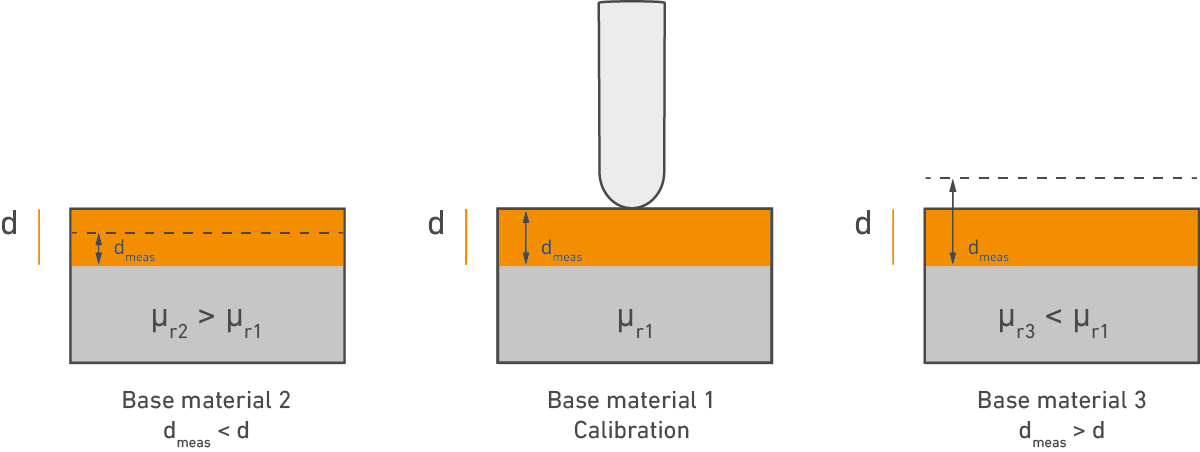
Application on curved surfaces
In practice, most measurement errors occur due to the shape of the test piece. On curved surfaces, the portion of the magnetic field that passes through the air changes. If a measuring device has been calibrated on a flat sheet, for example, this will result in measured values that are too low on a concave surface and thus result in coating thicknesses that are too thin. On a convex curvature, on the other hand, increased coating thicknesses are measured. The errors that arise in this way can be many times the actual value of the actual coating thickness.
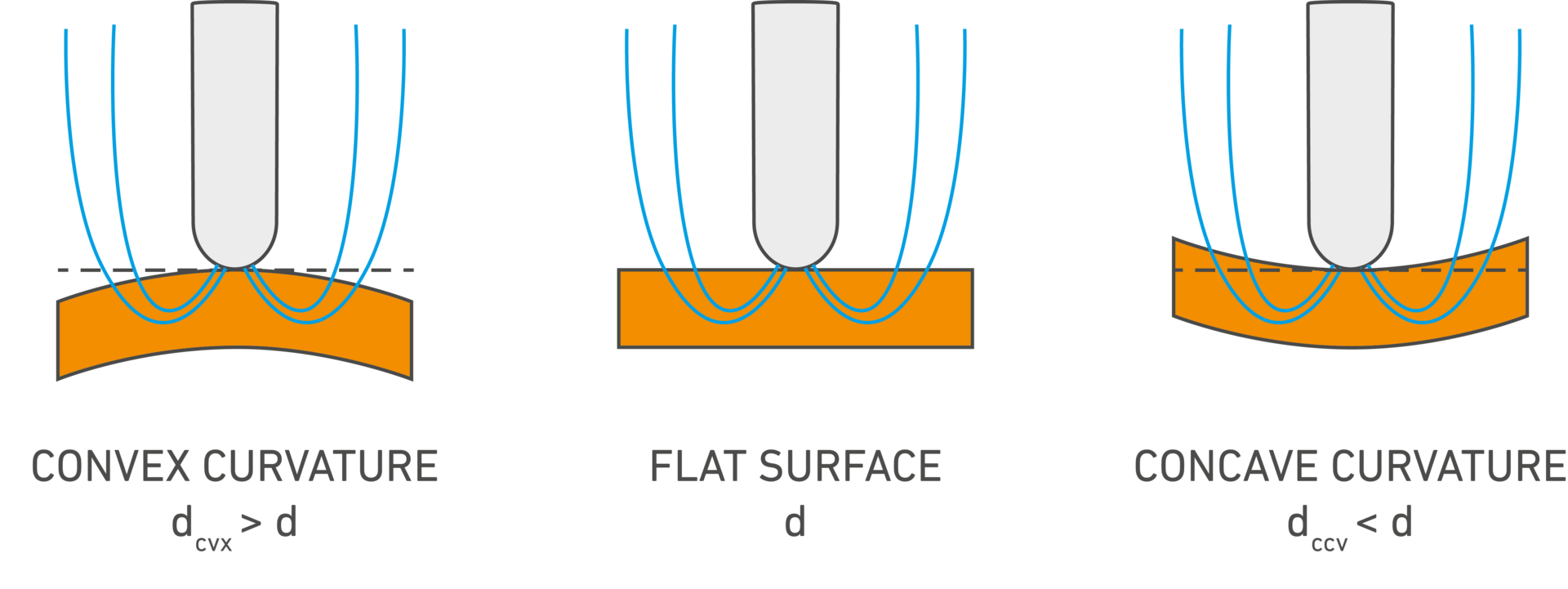
Application for small, flat parts
A similar effect can occur if the test part is small or very thin. In this case, too, the magnetic field reaches beyond the test part and partially runs in the air, which systematically falsifies the measurement results. To avoid these errors, you should always calibrate on an uncoated part that corresponds to your end product, if possible. This way, your coating thickness gauge will quickly provide reliable data on the thickness of the coating.
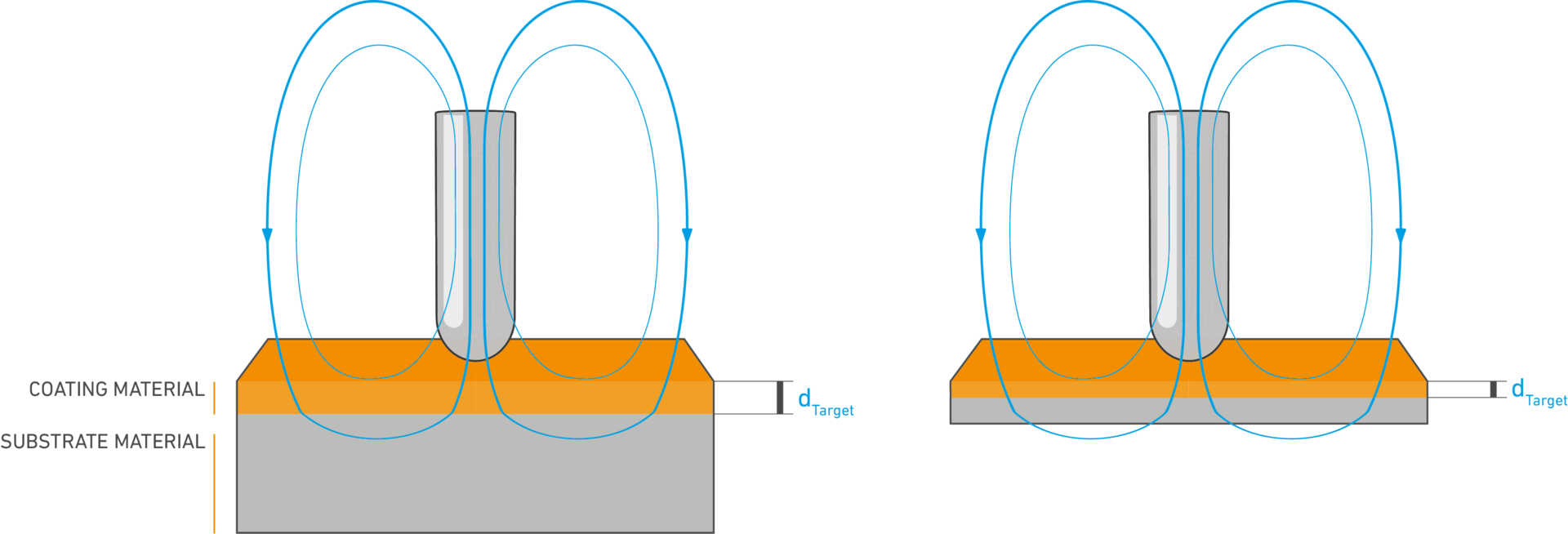
Rough surfaces
For rough surfaces, the result of the coating thickness measurement can vary greatly depending on whether the probe pole is placed in the valley or on a peak of the roughness profile. With such measuring, the results scatter and so we recommend making several repeat measurements to form a stable average. In general, coating thickness measurement on rough surfaces is only dependable if the coating thickness is at least twice as high as the roughness peaks. This is the only way to measure the coating thickness without errors.
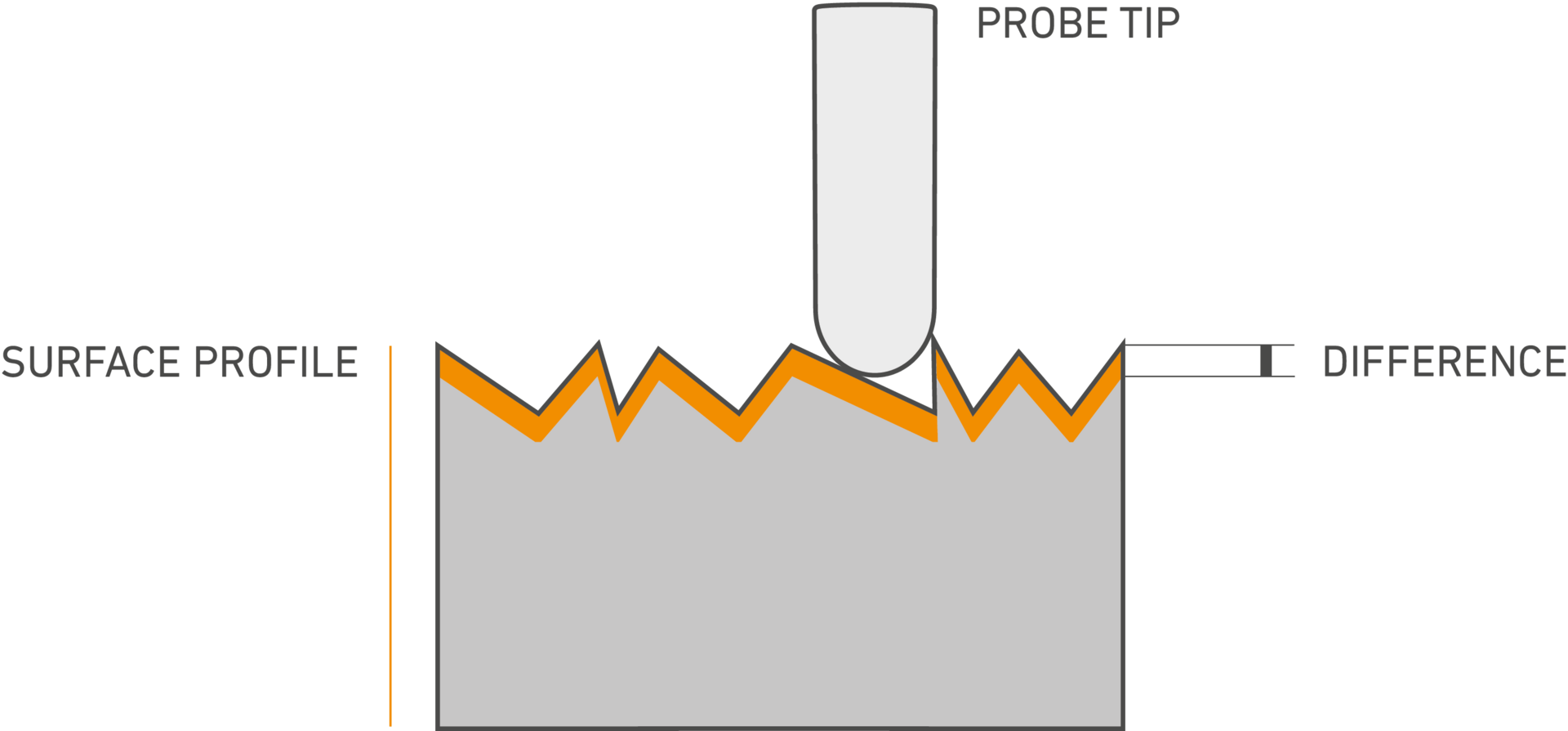
Operation of the coating thickness gauge
Last but not least, how the coating thickness gauge is operated also plays a major role in determining the coating thickness. Always make sure that the probe is held level above the coating surface and applied without pressure. For better repeatability, a tripod can also be used to lower the probe onto the test part. We also offer various placement aids, such as prisms for curved surfaces. Principle: Calibration is always performed on the uncoated part on the measuring surface on which the coating thickness is also measured later.
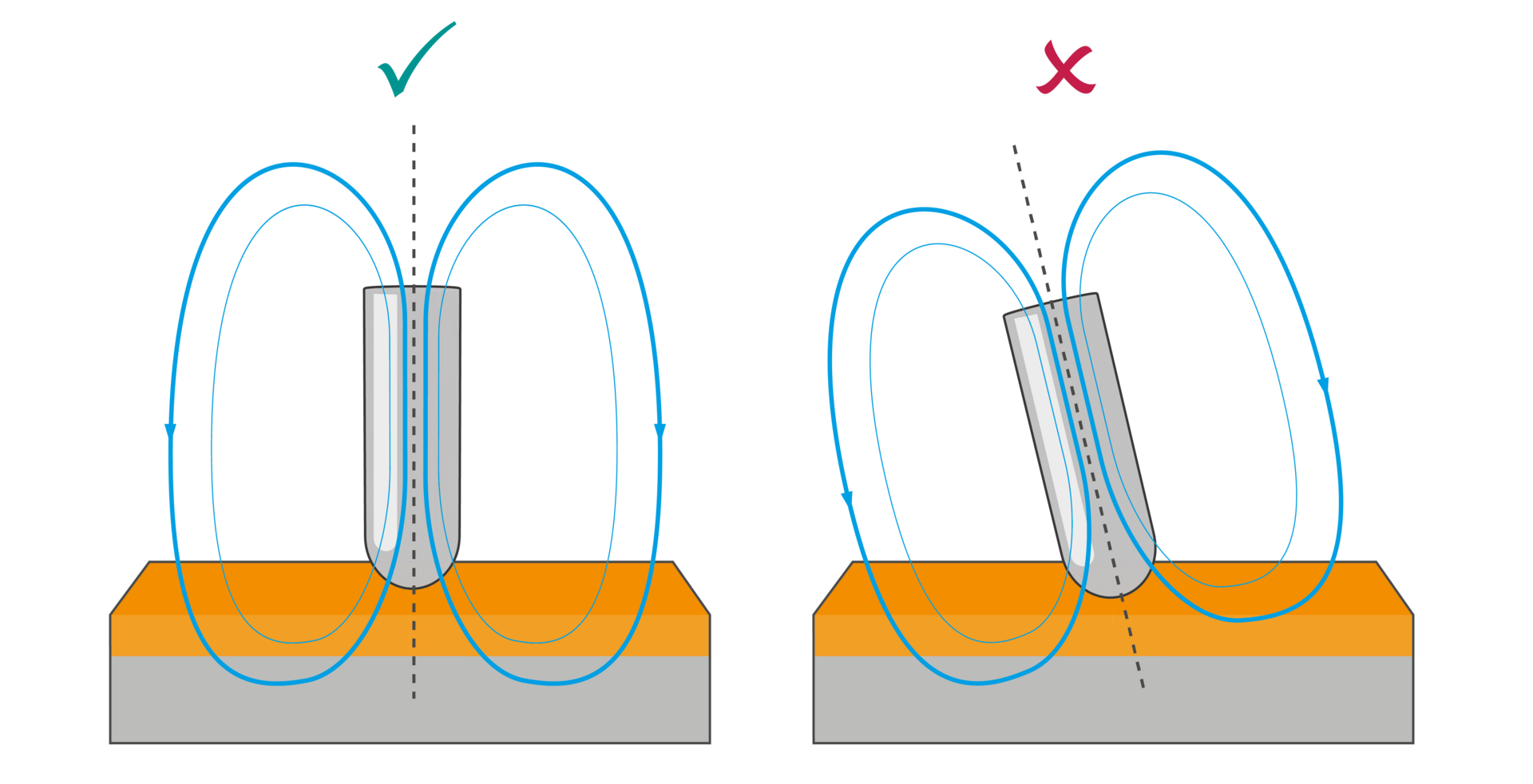
Important
To counteract erroneous measurement results, the following influences must also be taken into account:
- Indentation errors with particularly soft coatings (such as phosphate coatings).
- Scatter increases due to wear of the probe pole. We recommend carrying out regular checks.
Which standard is applied here?
Magnetic method according to DIN EN ISO 2178
